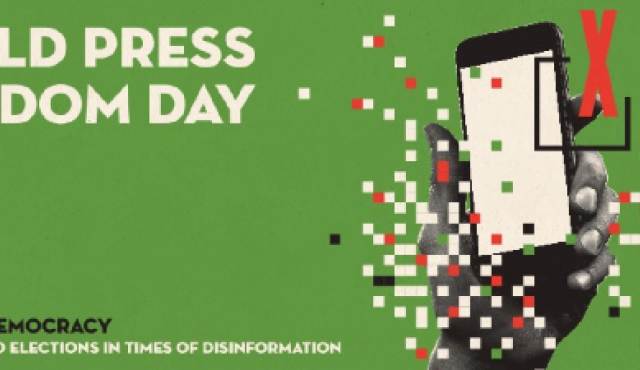By Moez Chakchouk, Assistant Director-General for Communication and Information of UNESCO, and Silvia Montoya, Director of the UNESCO Institute for Statistics (UIS)

On World Press Freedom Day (3 May), we are reminded of the urgent need to ensure freedom of expression and access to information in this digital age of disinformation and violence directed at journalists. This is why the UNESCO Institute for Statistics (UIS), working with the UNESCO sector for Communication and Information (CI), is developing a new global data collection on these issues, thanks to support from the Swedish International Development Cooperation Agency (SIDA), which is a longstanding champion of human rights in the area of communication and information.
Communication and media freedom are both part of the Sustainable Development Goal (SDG) agenda given their critical role in supporting democracy and good governance. As part of wider efforts to promote peace and inclusion, SDG 16 specifically focuses on the need to promote public access to information and fundamental freedoms.

Despite the exponential growth in the amount of information available, access remains a political as well as a practical issue. The 24-hour news cycle can deliver information about national and world events at the click of a button, yet according to UNESCO’s latest report on World Trends in Freedom of Expression and Media Development, many actors are finding ways to control and manipulate content, often without transparency or alignment to international standards.
Even countries with strong legal guarantees of freedom of information can still find ways to restrict access to information by withholding data and documents that should be in the public domain.
At the same time, journalists – especially women – continue to face serious risks. At least 530 journalists were killed between 2012 and 2016 and many more experienced abuse - like kidnapping, torture and online harassment, according to the UNESCO World Trends report.
This is highlights the importance of SDG Target 16.10 which calls on countries to “ensure public access to information and protect fundamental freedoms in accordance with national legislation and international agreements”. This is an accelerator target, in that achieving it will help advance the rest of the SDGs.
There are two indicators to monitor this target:
Indicator 16.10.1: Number of verified cases of killing, kidnapping, enforced disappearance, arbitrary detention and torture of journalists, associated media personnel, trade unionists and human rights advocates in the previous 12 months.
Indicator 16.10.2: Number of countries that adopt and implement constitutional, statutory and/or policy guarantees for public access to information.
Data to support the right to information
While 116 countries have laws or guarantees for information in place, it is difficult to evaluate if they are being put into practice consistently and within a reasonable timeframe. In particular, questions arise concerning the efforts and capacities of governments to make information available, as well as about citizen awareness of their rights to seek and receive information.
Currently, the UIS and UNESCO are co-operating on a Rapid Data Collection exercise to assess implementation of the right to information in a sample of the countries involved in this year’s Voluntary National Review of the SDGs, including SDG 16.10. This involves a specially tailored questionnaire produced through the mandate of UNESCO’s International Programme for the Development of Communication.
At the time of writing, the UIS is also conducting scoping studies to identify possible thematic indicators to give extra depth to the World Trends Report and the newly minted Internet Universality Indicators – which cover issues such as freedom of expression, privacy and equitable access.
After these exercises, we will set up an advisory committee of national and international experts to help develop a data collection strategy and a pilot study during 2019. In addition, feedback from the experts and countries participating in the Rapid Data Collection exercise will also help us finalise the shape of the global survey in 2020.
The plan is to begin collecting data for this survey in the first quarter of 2020. In the meantime, we are working to ensure that the questions and the indicators are relevant and that the data required to assess this indicator are available.
Throughout this process, we will ensure that the data reflects the needs and priorities of countries.
Here are some key considerations:
This important process of conducting a global survey on freedom of expression and access to information will have important consequences for human rights for years to come. This can feed UNESCO’s global reporting on SDG 16.10, as well as the World Trends Report and key dates like World Press Freedom Day, and the International Day for Universal Access to Information.
The resulting data are crucial for advancing SDG Target 16.10 and helping to keep journalists safe and expand the availability of public information in the public domain.
Thanks to the support of SIDA, the UIS in partnership with UNESCO will be able to collect the data and support wider efforts to help ensure everyone’s right to information.
Leave a comment